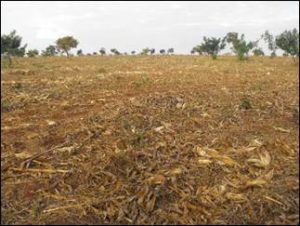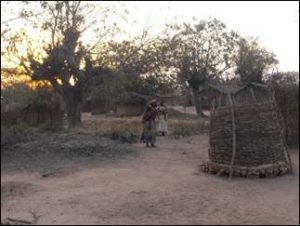Project Summary
Low productivity in agriculture is a pressing challenge in the developing world, and especially in Africa. The compound effects of farming with mechanized soil tillage, climate change, and increasing urbanization are adversely affecting the long-term productivity of soil worldwide. As a result, crop yields in developing countries are often many times lower than those that could be achieved using readily available technologies and new farming techniques. Improving food security and agricultural incomes therefore depends on farmer adoption of these tools and techniques.
A critical determinant of new technology adoption is the learning process through which information on these techniques is disseminated, understood, and applied. Although the importance of information flow through existing village and social networks in developing countries is well-documented, to what extent these networks can be used to disseminate new information from public sources—such as agricultural extension officers—remains unclear. Distance or disparity among individuals, in either geographic or social space, appear to be important determinants of communication and learning.
Understanding how gender and relationship disparities affect communication between extension officers and farmers, as well as between farmers is crucial to designing effective information-based interventions to promote technology adoption. This study aims to address these and other questions in the context of the Malawi Agricultural Development Programme Support Project (ADP-SP). Complementing the national agricultural input subsidy program, the project is intended to support the efforts of the Malawi Ministry of Agriculture to achieve sustainable productivity growth in smallholder maize production systems. We will evaluate both the technologies and methods for disseminating information about the technologies, with particular attention to farmer communication patterns across social networks and across gender lines.
The first project (with A. BenYishay) documents that teaching farmers about new technologies through “peer farmers” (average-looking farmers in the village), and providing those peer farmers performance-based incentives to communicate to others, leads to greater knowledge dissemination and technology adoption over the subsequent two seasons compared to the status quo extension strategy or another treatment that gives lead farmers the responsibility to communicate. Given the success of the peer farmer strategy, a follow-up experiment (with Beaman, BenYishay, Magruder) takes a more sophisticated theory-driven approach to identify “optimal communicators” who would maximize diffusion in the network. We collect census data to map all social network relationships in 200 villages in Malawi, and conduct simulations on these data to identify the theoretically optimal communicators under two specific models of diffusion: simple contagion or complex contagion theory. Our field experiment compares these theory-driven network targeting approaches to simpler, scalable strategies to select partners using either extension agents or a geographic proxy. The Department of Agriculture in Nepal has replicated the peer farmer program upon learning about the results of the Malawi experiments. I added a treatment arm to this replication where we provide flat payments to the communicators (as opposed to performance-based incentives) to see if the flat rewards, which do not require costly monitoring of performance, can realize the adoption gains that we observed in Malawi with incentive payments. The simpler payment structure would be a much more scalable and feasible diffusion strategy for developing country governments. A fourth paper (with A. BenYishay, F. Kondylis and M. Jones) examines the relative performance of male and female peer farmers.
Research Partners:
Ariel BenYishay (College of William and Mary), Lori Beaman (Northwestern), Maria Jones (World Bank DIME), Jeremy Magruder (UC-Berkeley), Malawi Department of Food & Agriculture, Florence Kondylis (World Bank)
Papers
A. BenYishay and A. M. Mobarak, “Social Learning and Communication,” Revise and Resubmit, Review of Economic Studies
L. Beaman, A. BenYishay, J. Magruder and A.M. Mobarak, “Can Network Theory based Targeting Increase Technology Adoption?” Working Paper
Media Coverage
The Development Policy Centre – DevPolicy Blog; Oct 3, 2013. “Can social networks lead to more cost-effective aid?”
Communicating with Farmers through Social Networks
Documentation
Baseline Survey (for first project – BenYishay and Mobarak) (English)
Phase I Endline Survey (for first project – BenYishay and Mobarak) (English)


